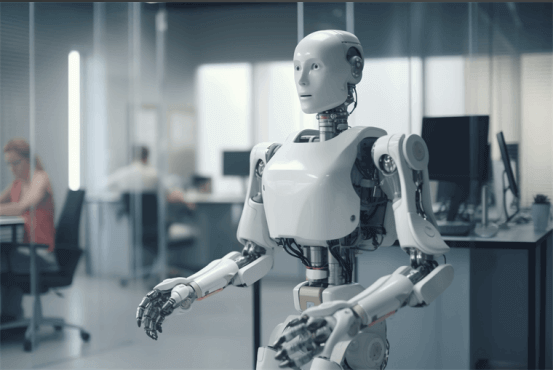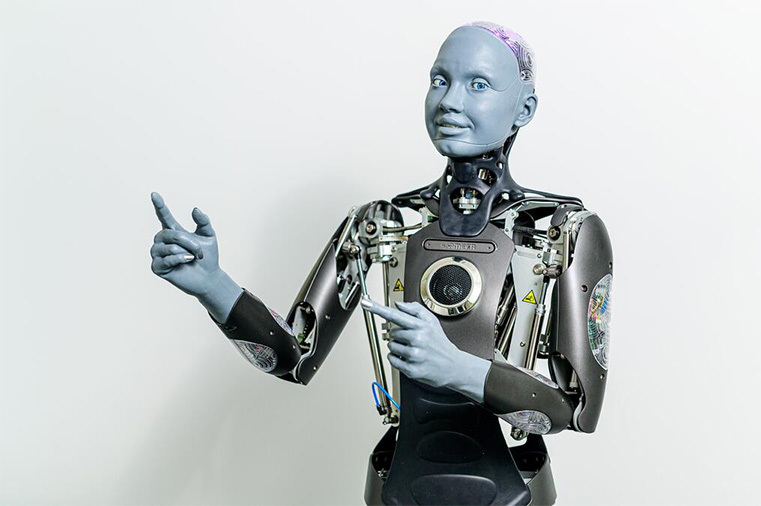
News Center
Humanoid Robot: Application, Development, and Future Trends
Published on.
2024-09-25 15:16
Source
Humanoid robot, also known as Humanoid robot, are a type of intelligent robots designed to operate in environments where humans work and live, manipulate tools and equipment designed for human use, interact with people, and mimic human appearance and behavior.
Humanoid robot represent a significant manifestation and key equipment of artificial intelligence in the physical realm, integrating advanced technologies such as artificial intelligence, high-end manufacturing, and new materials. They hold broad development prospects and are poised to play an important role in promoting high-quality economic development and social progress. With the continuous advancement of android technology, this field is rapidly becoming a key industry in driving the development of new qualitative productive forces.

They can be applied in various fields such as industrial manufacturing, warehousing and logistics, home care, and medical services. For instance, in the realm of home care, Humanoid robot can enhance the quality of life for the elderly and children through emotional interaction and task execution. In the commercial service sector, the application of Humanoid robot is also continuously expanding, with uses in airport services, exhibiting guides, and more, all providing ample space for the commercialization of Humanoid robot.
Development Stages of Humanoid Robot
1960-1990 - The Embryonic Stage
During this period, Humanoid robot were characterized by their rudimentary “human form”, with the primary focus of research and development on the robots’ “lower limb movement”. In 1968, the General Electric Company (GE) in the United States attempted to develop a manipulative bipedal walking robot named “Rig”. In the same year, Professor Ichiro Kato at Waseda University in Japan initiated the development of bipedal robots, successively introducing continuously iterated versions such as WAP-1, WAP-3, and WL-5, marking the entry of the android industry into the germination stage.
1990-2010 - The Development Stage
In this stage, Humanoid robot were characterized by the addition of more functionalities, with the focus of R&D shifting from “how to achieve better walking” to “endowing robots with more ‘Humanoid features’”. In 1986, Toyota Corporation in Japan introduced the P series robots, models 1-3, and later the “P3” in 1997 and “ASIMO” in 2000. “ASIMO” not only optimized walking methods but also added manipulation and control of the hands. In the same year, Sony launched the entertainment android SDR-3X, which was distinguished from previous products by its voice recognition and image recognition capabilities, allowing it to move rhythmically to music. The new generation of Android introduced by Toyota and Sony officially pushed the research, production, and commercialization of Humanoid robot towards practicality, engineering, and marketization.
2010-Present - The Diversification Stage
Humanoid robot in this stage are characterized by their intelligence, with the focus of R&D shifting from “endowing robots with more other “Humanoid features” to “how robots can develop autonomous decision capabilities”. Boston Dynamics, Tesla, and other tech companies have released self-developed Humanoid robot. For example, SoftBank Group Corp. Pioneered the commercialization process of Humanoid robot in 2015, and in 2021, Boston Dynamics showcased the highly capable Atlas. In this stage, apart from more mature motion and perception modules, the most prominent feature of Humanoid robot is the application of large models, which significantly improves the training speed and efficiency of robots and strengthens their autonomous decision-making capabilities.
According to the "Humanoid Robots: Future Development Trends and Strategic Recommendations for Shanghai" published by the Shanghai Science and Technology Commission (STCSM.SH.GOV.CN), humanoid robots are progressively characterized by the following features from their initial to advanced stages: autonomous mobility, intelligent collaboration, dexterity in movement, and the capability to mimic subtle body gestures.
Trends in the Humanoid robot Market
According to forecasts by relevant institutions, the market size of the Humanoid robot industry in China is expected to be around 389.16 million USD in 2024, reaching 10.67 billion USD by 2029, accounting for 32.7% of the global total, and is anticipated to scale up to 42.3 billion USD by 2035.
Global Labor Shortage Spurs the Development of the Humanoid Robot Market
Humanoid robots assist and augment existing workforces, helping enterprises address labor shortages. Consequently, an increasing number of companies are opting for humanoid robot solutions to tackle labor deficits.
Global Labor Shortage Spurs the Development of the Humanoid Robot Market
Humanoid robots assist and augment existing workforces, helping enterprises address labor shortages. Consequently, an increasing number of companies are opting for humanoid robot solutions to tackle labor deficits.
Technological Advancements Drive Market Growth for Humanoid Robots
Advanced technologies such as artificial intelligence, high-performance computing, next-generation sensors, and battery technologies are rapidly maturing and converging to propel the development of humanoid robots. AI and high-performance computing enable humanoid robots to understand and interact within complex and unstructured real-world environments. The use of AI in humanoid robot technology aids in enhancing accuracy and productivity.
Due to supportive government initiatives and investments, an aging population, and a robust robotics culture, the Asia-Pacific region held the largest market share in 2023. China, Japan, and South Korea represent the leading industrial robot markets globally. According to data from the International Federation of Robotics (IFR), China's annual installation of industrial robots in 2022 was 290,300 units, accounting for a 52% market share, while Japan's annual installation was 50,400 units.
Government Initiatives to Promote the Development of the Robotics Industry
China
The Chinese government has introduced the "14th Five-Year Plan" for the development of the robotics industry, setting clear goals. By 2025, China aims to become a global hub for robotics technology innovation, a high-end manufacturing center, and a new highland for integrated applications. A batch of core robotics technologies and high-end products are expected to achieve breakthroughs, with the overall performance of the machinery reaching international advanced levels, and the performance and reliability of key components matching international peers. By 2035, China's robotics industry is expected to reach a leading position globally, with robots becoming an integral part of economic development, people's lives, and social governance.
France
As early as 2013, the French government launched the "Plan for the Development of Robotics in France," allocating €100 million to encourage businesses to adopt robots and promote the continuous development of the robotics industry. France has also established a robotics industry sector fund, providing support for businesses to use robots through investment attraction and government subsidies. With current market demands, the government's support will steer the industry towards high-end and intelligent development.
Germany
In 2019, the German government established a five-year national promotion plan with an investment of over €50 million to support the development of high-tech industries, with the robotics industry being a significant component. In addition to providing direct funding to businesses, Germany also supports research institutions to accelerate the transformation of research results, promoting the faster application of robotics industry achievements in daily life and enhancing the interactivity between robots and users.
South Korea
To develop the robotics industry, South Korea formulated the "Act on the Promotion of the Development and Distribution of Intelligent Robots" as early as 2008, treating the robotics industry as a core national industry. Since 2009, the country has established a "Basic Plan for Intelligent Robots" every five years, with corresponding specific implementation plans. In 2022, South Korea's Ministry of Trade, Industry, and Energy decided to invest 244 billion won in the research and development and popularization of industrial and service robots, providing possibilities for the realization of more applications.

HONEST’s Humanoid robot Stator Assembly Line
In response to national policies and market development trends, HONEST has continuously increased its R&D efforts in Humanoid robot, successfully designing a stator assembly line. The winding machine of this production line adopts a three-station design, which greatly improves the winding efficiency. The operation of changing the winding tooling is convenient, and it only takes 1 hour to complete the product model change. To ensure product quality, the production line is designed with a leakage detection process to ensure that the quality of each stator meets a high standard.
We are committed to providing customized humanoid robot solutions for our customers. If you have any requirements, please feel free to contact HONEST at any time. Our professional team will provide you with a detailed introduction and preliminary quotation.
Previous page
Related News






